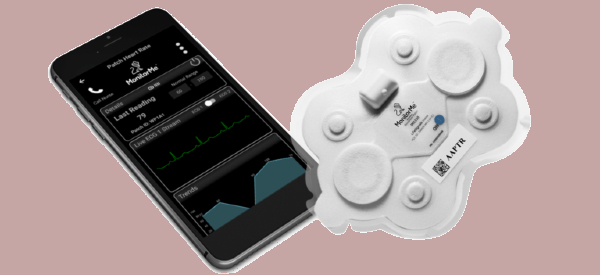
Flexible patch wearables with biometric sensors paired with remote monitoring capabilities are a wonderful example of just-in-time technology with the COVID-19 pandemic. Telemedicine is another rapidly developing concept that gained traction during these trying times. Pairing remote monitoring with telemedicine services reduces exposure to contagions for both healthcare professionals and their patients. It’s also a lot more convenient when each party doesn’t have to travel to the other’s location.
This year we wrote about the UK’s NHS Project Breathe in which cystic fibrosis patients use remote devices to monitor vital signs and other relevant indicators including lung capacity, transmitting the data to their NHS physicians. We also covered Fresenius Medical Care‘s report of success using remote monitoring with patients who administering peritoneal dialysis treatments at home. IDTechEx’s 2020 report on trends and technologies in cardiovascular patient care stressed the increased healthcare accessibility and efficiency possible with remote patient monitoring (RPM).
New York-based RPM service provider MonitorMe recently announced a partnership with Harvey Nash/Nash Tech Global. MonitorMe provides chronically ill patients with a small, disposable, smart patch. Patients apply the FDA-cleared patch to their chests, and the device streams 2-lead ECG, heart rate, and respiratory rate data in real-time. The patch lasts for three days. Biosensors in the patch transmit vital signs via a gateway device to MonitorMe’s 24/7 Monitoring Intervention Center (MIC).
Board-certified medical professionals provide patient services for the MonitorMe MIC. The physicians and other medical staff at the MIC communicate with patients via mobile devices or computers to diagnose and deploy additional medical assistance as needed.
According to MonitorMe, the company is unique in its role as both a technology and medical care provider. During a five-month pilot study of the new arrangement with 105 patients, MonitorMe reports that service helped the patients avoid 16 emergency department visits and 16 hospital admissions. In light of the current COVID-19 threat, keeping anyone — especially chronically ill people — away from hospitals and EDs is a very good thing.
We’ve written about plenty of technology companies that build sensors for remote monitoring. We’ve also written about medical services and groups that employ remote technology. This is the first time we’ve encountered a single company that develops technology and provides medical care. Whether or not that combined model can be replicated is an interesting question.

